I am not you (a revolutionary)
A series of seven type C photographs created in 2003 and exhibited in Brisbane, Sydney and Melbourne Australia throughout 2003 - 2006.
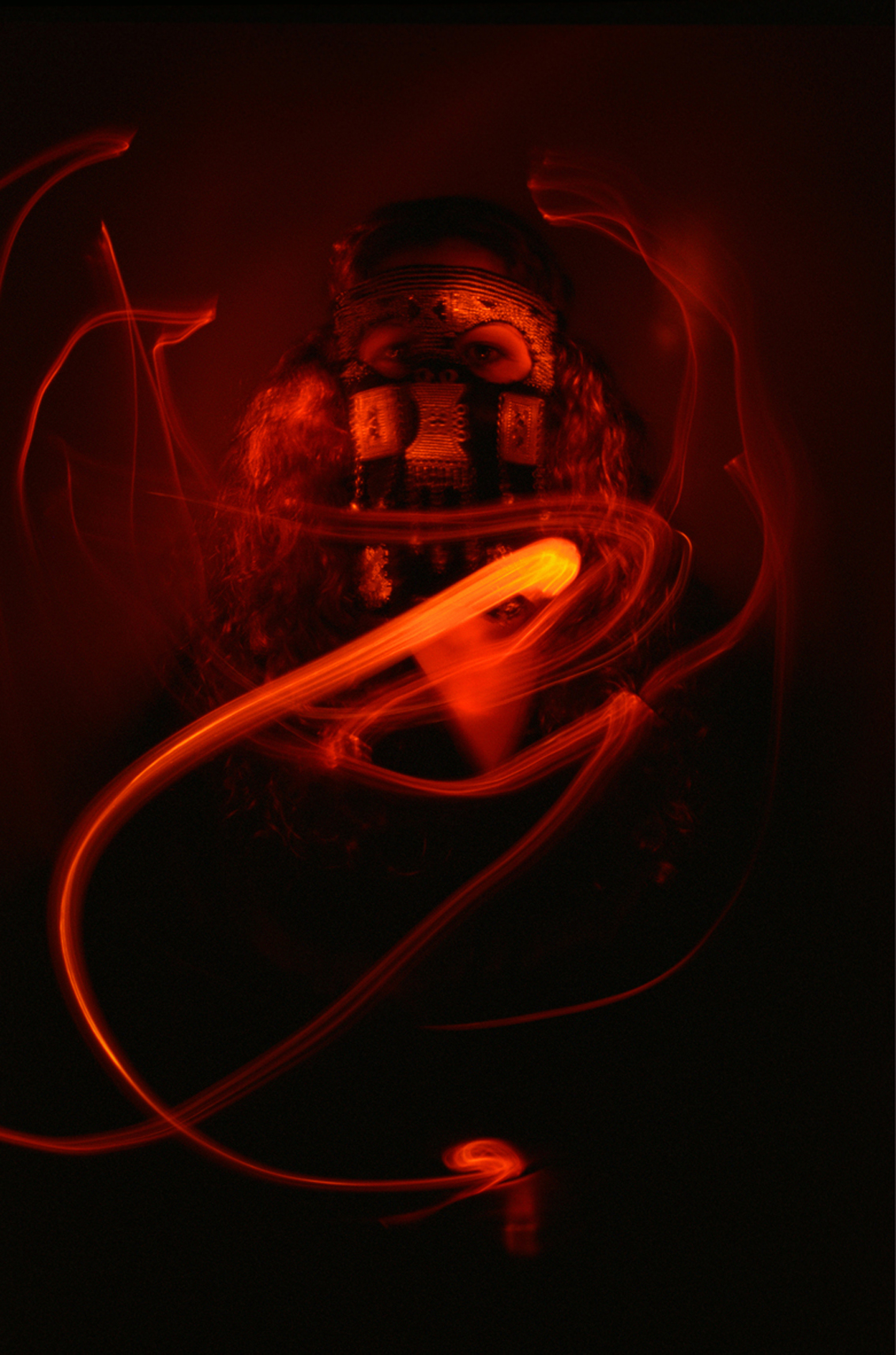
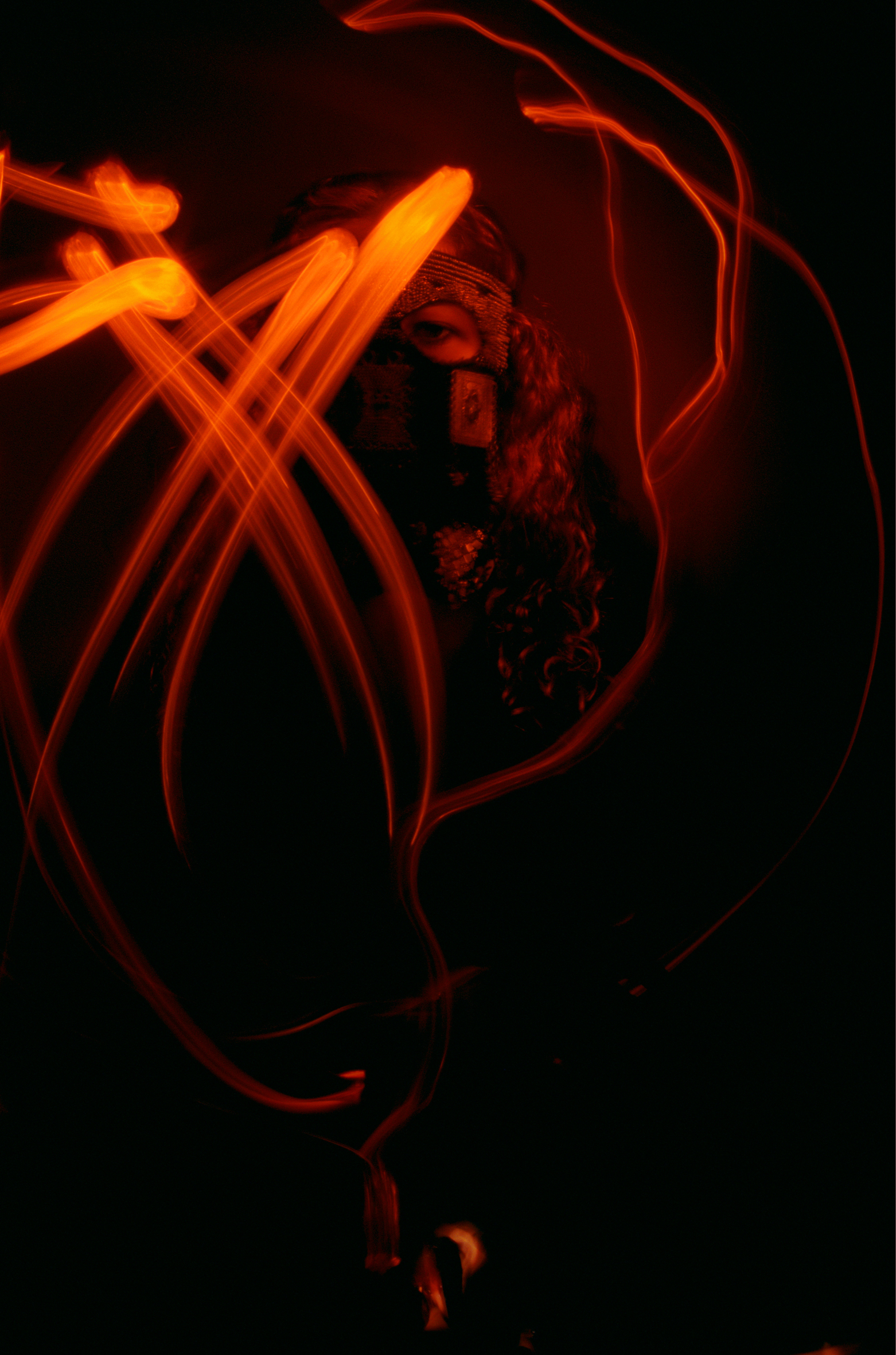
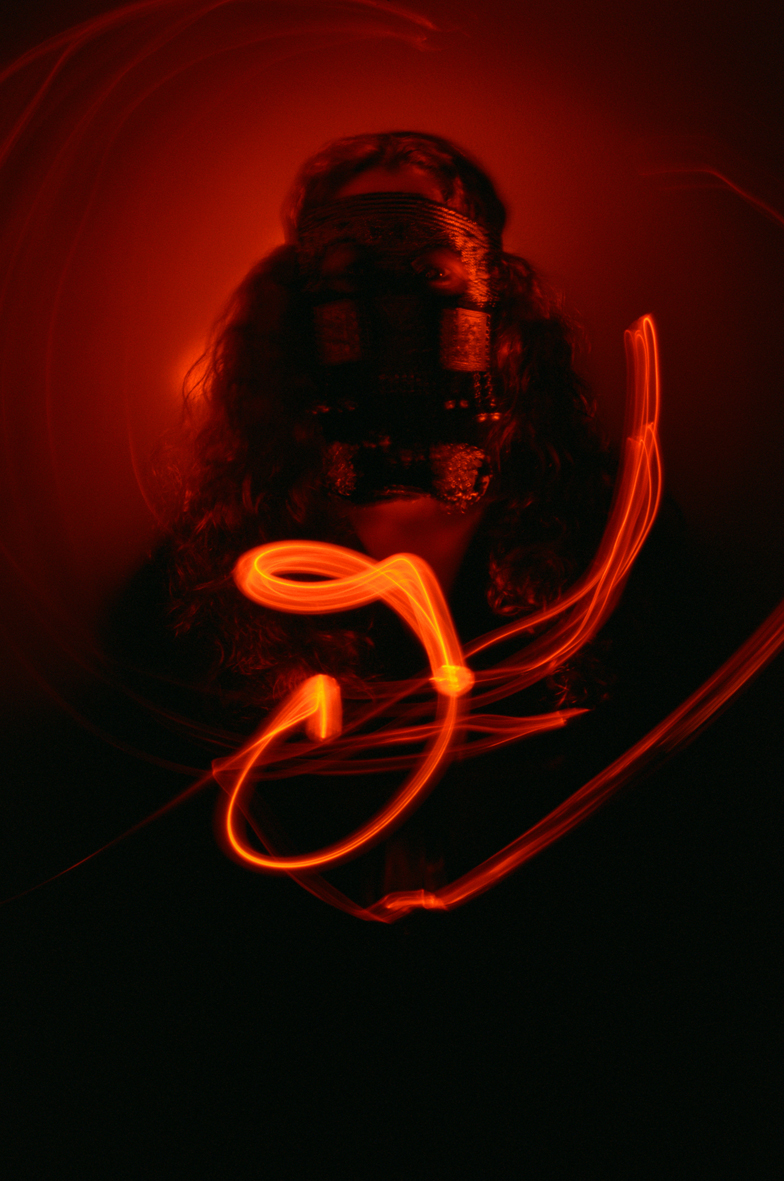
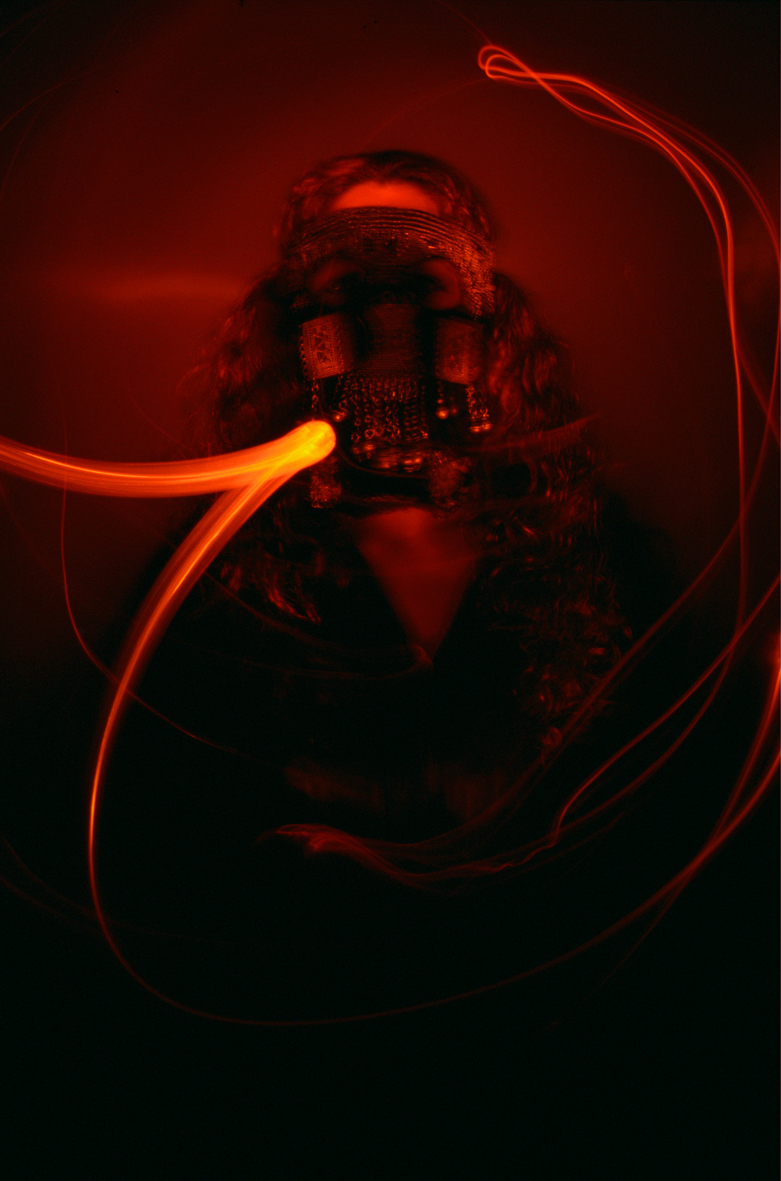
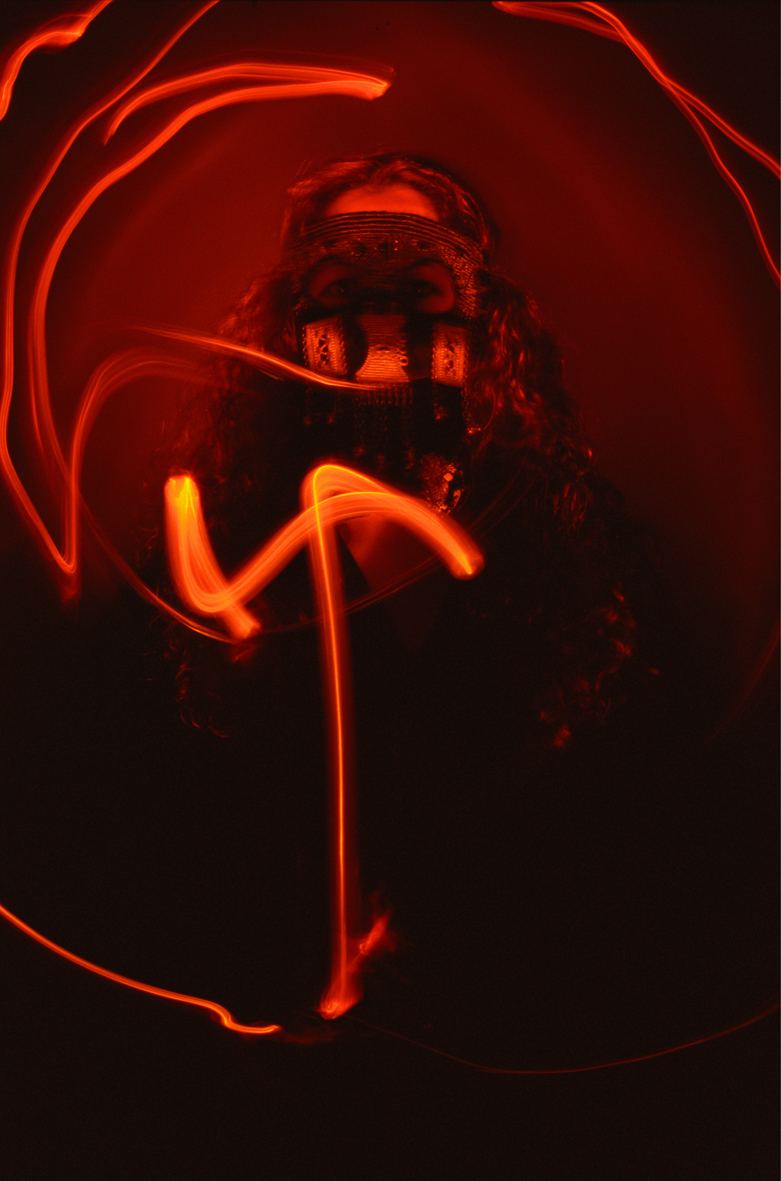
SAVVY: New Australian Art
Curated by Alison Kubler, Queensland University of Technology Art Museum
6 August - 17 October 2004
Catalogue excerpt -
Contemporary art in Australia is perhaps best characterised by a diversity of practice and disparate trends. SAVVY: New Australian Art illustrates the energy and vitality of Australian contemporary art and celebrates emerging and established Australian artists from Queensland and interstate. The six featured artists all place emphasis on the importance of technique, process and attention to detail in the creation of provocative new work that supports a number of divergent and engaging dialogues about the potential for new understandings of contemporary art. These artists’ different, savvy approaches to art making and their awareness of how visual culture might communicate with a contemporary audience, exemplifies a sophisticated attitude to cultural production. SAVVY features new work by Lionel Bawden, Sangeeta Sandrasegar, Mandana Mapar, Christopher Bennie, Beata Batorowicz and Nicola Brown and includes sculpture, drawing, photography, video, painting and installation.
Mandana Mapar (b.1978) is an Iranian born Queensland based photographer whose recent work has involved a series of self-portraits that examine her cultural heritage. Mapar was born in Tehran, Iran in 1978 where she lived until 1986.
Mapar’s personal experience as a dispossessed person and a metaphorical refugee, (her family chose to leave Iran), adds a deeper dimension to her investigation of identity within the context of contemporary Australia. Mapar has often cast herself as the subject of her photographic portraits, wearing traditional veils (roosaree), her hair sometimes exposed in tumultuous abundance, or hidden beneath a floor length veil (chador) in the Australian landscape.
This conscious choice of self as the depiction of the ‘other’ is both brave and quietly considered,
a restrained approach to notions of the exotic.
For these self-portraits Mapar has created long exposures of herself wearing veils over which she writes with light in Farsi the words I am not you and Revolutionary. This use of text to declare her otherness makes important links back to the rich Persian poetry tradition. The word Revolutionary is particularly charged and carries not only associations of Iran’s turbulent political history, but also of Mapar’s identity as a woman artist declaring for herself the right to create
cultural myths of her own. In some images the words can be clearly made out, in others certain characters are more prominent while the rest of the text is rendered almost inscrutable. The gesture of writing, which is almost painterly, emerges as equally as important as the text itself.
Works featured in Savvy: Untitled # 1 from the series I am not you (a revolutionary) 2003
and Untitled # 29 from the series I am not you (a revolutionary) 2003 C Type photographs, 76 x 115cm
Catalogue ISBN: 1 74107 068 6
Review of the exhibition by Michele Helmrich, published in Artlink December 2004
Surface Tension, the artist in the image
Curated by Alasdair Foster, Australian Center for Photography Sydney Australia
23 January - 29 February 2004
Departure Lounge
Queensland Center for Photography, Bulimba Brisbane Australia
September 17 - October 5 2005
Excerpt from the catalogue essay by Alasdair Foster, Director of the Australian Center for Photography 1998–2011
I love the departure lounge of airports. You’ve schlepped your luggage to the terminal, stood in line for god-knows how long to check in, dismantled the laptop and removed half your clothing to clear security and now you wander the concourse of the hopeful traveller. You begin to switch off the areas of your brain associated with self-determinate action and wait to be institutionalised by the cabin crew as they seek to maintain the illusion to which you cling: that it is the plane that stays still and merely the globe which turns below you to align you with another point on its surface.
Fellow travelers teem around you heading off to … who knows where: Paris, Mumbai, Buenos Aires, Coolangatta … A day from here they will be scattered across the surface of the earth like cottonseed. But for now they share with you this hopeful concourse.
Back in the real world of Bulimba and the departure lounge of Queensland Centre for Photography, the paths of five artists momentarily coincide before they head off on their own particular journey through life. There is little that binds these artists together save their current location and their recent sojourn in Queensland’s Gold Coast resort. That and the fact they all speak the same language. The language of photography.
...
MANDANA MAPAR
Despite the current hard-line government attitude to immigration, Australia is, thanks to more welcoming policies of previous decades, a highly multicultural country. Not only is the antecedence of its population highly diverse but more than a fifth of the population were born overseas. The immediacy of an ongoing synthesis of origin and newfound home is therefore an important aspect of Australia’s cultural hybridity.
Born in Tehran in 1978 and immigrating to Australia, following a spell in New Zealand, in 1993, Mandana Mapar has grown up in the flux of native and adoptive cultures. In the works showing here she explores the gestural forms of writing as a device linking her Persian heritage with her current life on the Gold Coast. Using a small electric torch she writes in the air during long camera exposures made in darkness. In I am not you (a revolutionary) she spells out in her mother tongue of Farsi the words of the title. We see the artist herself illuminated by the soft glow of torchlight. She wears a traditional veil.
The idea for the work arose after seeing the face of a young Iranian man repeatedly reproduced in the Iranian and international press. He had been jailed for his part in the protest marches of 1998 and has since come to occupy the minds of thousands of young Iranian women as a both a spunky pin-up and a personification of a struggle for freedom. But, as the text spelt out in this work suggests, the artist does not wish to be collapsed into the generalised stereotype of disaffected emigrant. And the veil she wears is not the traditional Persian article but an Arab niqab, further suggesting the amalgams of identity that overtake the émigré in a distant land.
The navigation of individual identity through contemporary urban life, cultural heritage and ethnic stereotype is a complex undertaking and one which is at the heart of Australia’s negotiation of a society which is as rich as it is fair.
.....
This essay was first published in 2004 by Queensland Centre for Photography
Flashpoint
7 September - 5 October 2003
Room notes excerpt -
'A la recherche du temp perdu'
The images in this exhibition are staged, like a mise-en-scene. They are not just polaroids of everyday life. They are different worlds that are so much a part of our past yet created in our present. Contrary to today’s digital era that inundates us with easily accessible photography, these images are meticulously stage-managed, and the characters are virtually performed by actors, not just posed by photographic models. These symbolic images become the photo-artist’s conceptual explanations of a captured moment in the past still so potent & influential in our present time. The female physique & psyche behind & in front of the camera is certainly manifest throughout Flashpoint – there is a kind of eerie narrative - the sense of not knowing - like a take of a film you cannot fully comprehend or visually decypher. These photographs are like stills of a film directed by no one, yet simultaneously designed with particular attention to detail: a carefully articulated master plan of fixed moments that translates into a visually rich & disturbingly threatening narrative. We are drawn into the scene without knowing the plot – yet we are intrigued enough to discover what took place before & what may happen next.
Works included by artists Jolyon James/Raphael Ruz, Lisa Walker, Mina Young, Bill Henson, Tracey Moffatt, Deborah Paauwe, Patricia Piccinini, Pat Brassington, Rosemary Laing, Sharon Green, Jeremy Park, Mari Hirata and Mandana Mapar.







